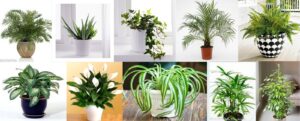Polypropylene (PP) plastic is one of the most widely used thermoplastics today, playing a crucial role in various industries, including the production of plant pots. With its superior properties such as high durability, heat resistance, and chemical resistance, Polypropylene has become the top material choice for manufacturing plant pots, meeting the growing consumer demand for convenience and aesthetics.

What is Polypropylene Plastic?
Polypropylene is a thermoplastic polymer derived from the polymerization of propylene. Since its invention in the 1950s, Polypropylene has proven its value in numerous industrial and consumer applications. With its unique molecular structure, Polypropylene offers excellent resistance to mechanical, chemical, and environmental impacts, making it an ideal choice for many products, including plastic plant pots.
Outstanding Properties of Polypropylene Plastic
Polypropylene plastic stands out with several key features:
- High Durability: Plant pots made from Polypropylene are highly impact-resistant and less likely to crack or break when dropped or exposed to strong winds or outdoor environments.
- Heat Resistance and UV Protection: Polypropylene has excellent heat resistance, maintaining its strength and shape under high temperatures. Additionally, PP plant pots are often enhanced with UV protection to prevent fading and aging when exposed to prolonged sunlight.
- Chemical Resistance: Polypropylene is highly resistant to various chemicals, including acids and bases, making it a safe and durable choice in different environments.
- Lightweight: One of the biggest advantages of Polypropylene is its lightweight nature, making plant pots easy to move and arrange in living or working spaces.
- Easily Recyclable: Polypropylene is highly recyclable, helping to reduce its negative environmental impact compared to other, less recyclable plastics.
Application of Polypropylene in Plant Pot Production
Thanks to these outstanding properties, Polypropylene is widely used in the production of plant pots in various shapes and sizes. From small indoor decorative pots to large outdoor garden containers, Polypropylene proves to be a versatile and reliable material.
Polypropylene plant pots are not only durable but also available in a wide range of colors and designs. With modern manufacturing technology, producers can create pots with smooth surfaces, unique patterns, and vibrant colors, allowing consumers to easily choose products that match their space and style.
The Future of Polypropylene Plant Pots
As more consumers become concerned about the environment, the demand for sustainable and eco-friendly products is rising. Polypropylene, with its high recyclability and long lifespan, is poised to remain a leading material in plant pot production in the future.
Furthermore, advancements in manufacturing and recycling technology are opening up new opportunities to enhance the quality and features of Polypropylene plant pots. Manufacturers are exploring new solutions to improve durability, weather resistance, and even integrate smart features like moisture sensors, making plant pots more convenient for users.

